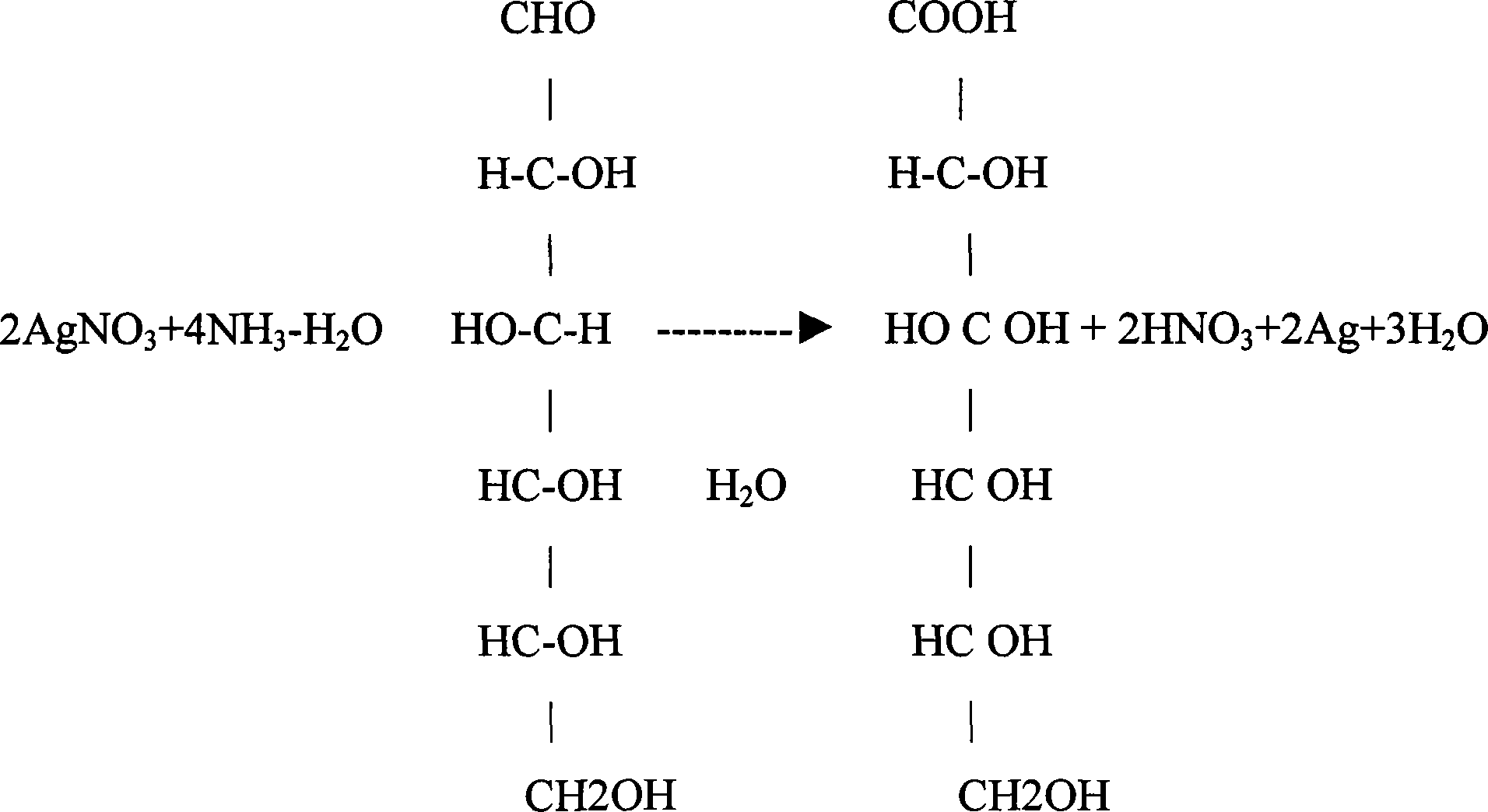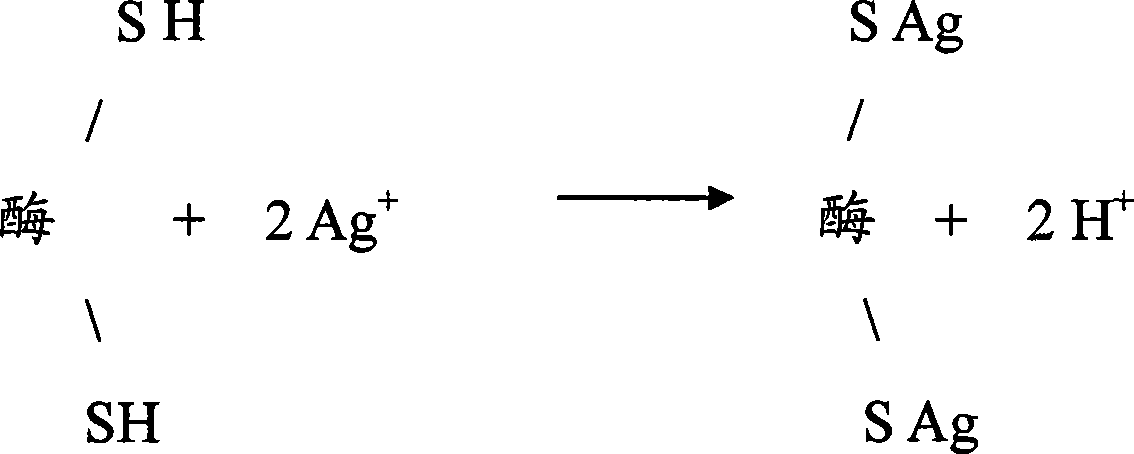Manufacturing methods and applications of antimicrobial plant fibers having silver particles
A plant fiber, antibacterial activity technology, applied in the field of patient cloth, can solve the problems of harming the user, easy to break, etc.
- Summary
- Abstract
- Description
- Claims
- Application Information
AI Technical Summary
Problems solved by technology
Method used
Image
Examples
Embodiment 1
[0048] Small-scale production of antimicrobial yarn
[0049] (1) Preparation of silver-containing solution
[0050] (a) Silver nitrate solution:
[0051] AgNO 3 3.9g
[0052]
[0053] Dissolve in 150ml water
[0054] (b) Silver-containing solutions:
[0055] A silver-containing solution was prepared by diluting the silver nitrate solution with additional water to a volume of 250 ml.
[0056] (2) Production of antibacterial yarn
[0057] Antibacterial yarns are produced as follows:
[0058] (a) Natural white degreased yarn (10 g) was immersed in the silver-containing solution of (1). The yarn is squeezed and tumbled in the solution so that the yarn completely absorbs the treatment solution.
[0059] (b) The silver-containing solution is partially removed by centrifugation (for example in a washing machine), dried in an oven at 120 to 160°C.
[0060] (c) washing the dried yarn with water, and drying in an oven again to obtain the o...
Embodiment 2
[0062] Production of antimicrobial yarns on an industrial scale
[0063] (1) Preparation of silver-containing solution
[0064] (a) Silver nitrate solution:
[0065] AgNO 3 5.5g
[0066]
[0067] Dissolve in 200L water
[0068] In a 500-liter container, 5.5 kg of silver nitrate was dissolved in 200 L of water at room temperature, thereby preparing an aqueous solution of silver nitrate.
[0069] (b) Silver-containing solutions:
[0070] Prepare a silver-containing solution by mixing the silver nitrate solution with additional water. Additional water was added to the mixture to bring the volume to 500 L.
[0071] (2) Production of antibacterial yarn
[0072] Antibacterial yarns are produced as follows:
[0073] (a) Natural white degreased yarn (200 g) was immersed in the silver-containing solution of (1). The yarn was squeezed and tumbled in the solution so that the yarn completely absorbed the silver solution.
[0074] The silver-cont...
Embodiment 3
[0077] Electron Microscopic Study of Antibacterial Yarn
[0078] (1. Purpose
[0079] For the yarn prepared according to the method described in Example 1, the size and distribution of the attached nano-silver particles were analyzed.
[0080] (2) Method
[0081] According to the method described in JY / T011-1996 Transmission Electron Microscopy Handbook, the 5 antibacterial yarn samples prepared in Example 1 (before) were studied. A JEM-100CXII transmission electron microscope was used with an accelerating voltage of 80KV and a resolution of 0.34nm.
[0082] (3) Results
[0083]Six batches of antimicrobial yarn samples containing nanosilver particles evenly distributed on the yarn were studied. Lot No. 010110 contained about 62% nanosilver particles with a size of less than 10 nm, about 36% nanosilver particles with a size of about 10 nm, and about 2% nanosilver particles with a size of 15 nm. Lot No. 001226 contained about 46% nanosilver particles having a size of less...
PUM
| Property | Measurement | Unit |
|---|---|---|
| diameter | aaaaa | aaaaa |
| size | aaaaa | aaaaa |
| size | aaaaa | aaaaa |
Abstract
Description
Claims
Application Information
 Login to View More
Login to View More - R&D
- Intellectual Property
- Life Sciences
- Materials
- Tech Scout
- Unparalleled Data Quality
- Higher Quality Content
- 60% Fewer Hallucinations
Browse by: Latest US Patents, China's latest patents, Technical Efficacy Thesaurus, Application Domain, Technology Topic, Popular Technical Reports.
© 2025 PatSnap. All rights reserved.Legal|Privacy policy|Modern Slavery Act Transparency Statement|Sitemap|About US| Contact US: help@patsnap.com


